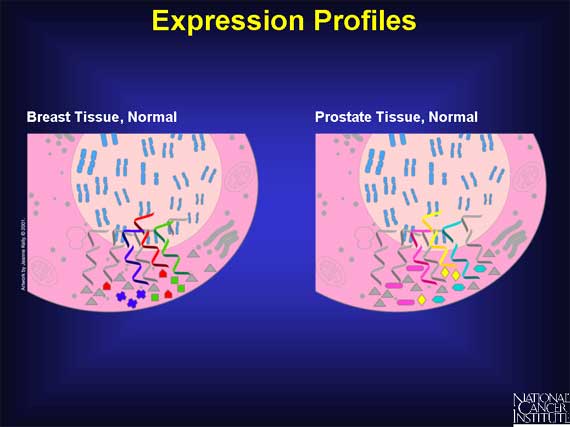|
In any type of tissue, only a limited set of the genes are switched on at any
given time. Also, from one tissue type to another, the limited set of genes
involved will vary. Thus, each tissue can be identified by its unique pattern
of gene expression. This pattern is often called an "expression profile" or a
"molecular signature".
Here is an example of a normal breast cell and a normal prostate cell. Although
both of these cells have many mRNAs and proteins in common (grey), they also
have unique differences.

< Previous | Index | Next Slide > |